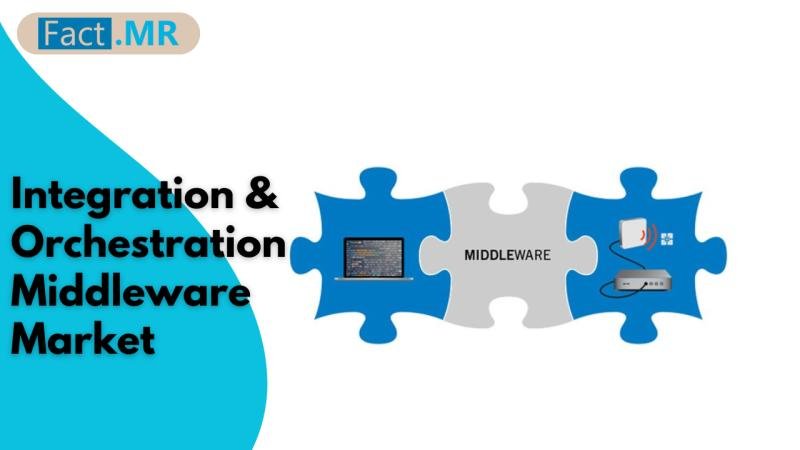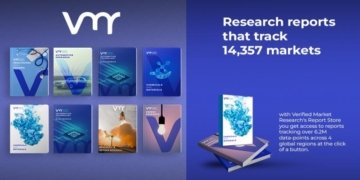The global integration and orchestration middleware market is on a strong growth trajectory, with its valuation rising from USD 12 billion in 2023 to a projected USD 26 billion by 2033, driven by a robust compound annual growth rate (CAGR) of 8%. This expansion is fueled by the increasing need for seamless data integration across diverse IT systems, the rise of cloud-based applications, and the growing adoption of digital transformation strategies across industries. As businesses strive to enhance operational efficiency and connectivity in complex IT environments, integration and orchestration middleware solutions are becoming critical for enabling real-time data exchange and process automation.
For More Insights into the Market, Request a Sample of this Report: https://www.factmr.com/connectus/sample?flag=S&rep_id=384
Market Segmentation and Trends
The integration and orchestration middleware market is segmented by type, including integration middleware, business-to-business (B2B) middleware, event-driven middleware, and managed file transfer (MFT) software, offering a comprehensive view of its dynamics. Integration middleware leads due to its role in connecting disparate systems, while B2B middleware is gaining traction for facilitating secure inter-enterprise data exchange. Event-driven middleware is growing rapidly, driven by demand for real-time processing in IoT and analytics applications, and MFT software is critical for secure, large-scale file transfers.
Key trends include the shift toward cloud-based middleware solutions, with 70% of enterprises adopting hybrid cloud environments by 2023, and the integration of AI and machine learning for intelligent automation. Regionally, North America dominates, while Asia Pacific is the fastest-growing region due to rapid digitalization in countries like China and India.
Driving Factors Behind Market Growth
Several factors are propelling the integration and orchestration middleware market. The proliferation of cloud computing, with global cloud spending reaching USD 500 billion in 2023, is driving demand for middleware to integrate on-premises and cloud-based systems. The rise of IoT, generating 79 zettabytes of data annually, necessitates robust middleware for real-time data processing.
Additionally, the growing complexity of IT ecosystems, with enterprises using an average of 900 applications, underscores the need for seamless integration. Regulatory requirements, such as GDPR and HIPAA, are pushing organizations to adopt secure MFT solutions. The increasing adoption of API-driven architectures and microservices is also boosting demand for middleware that supports agile, scalable integration.
Recent Developments and Key Players
The integration and orchestration middleware market is highly competitive, with key players focusing on innovation, cloud-native solutions, and strategic acquisitions to strengthen their market presence. In 2023, IBM enhanced its Cloud Pak for Integration with AI-driven automation features, improving real-time data orchestration.
MuleSoft, a Salesforce company, expanded its Anypoint Platform with new API management tools, targeting B2B integration. Red Hat, part of IBM, introduced advanced event-driven middleware for Kubernetes environments, catering to cloud-native applications. Other notable players include Oracle, Microsoft (Azure Integration Services), TIBCO Software, WSO2, Boomi, and Informatica, which are investing in low-code platforms and AI-driven orchestration to simplify integration processes.
Competitor analysis highlights a focus on scalability, security, and ease of use. Companies are developing low-code and no-code middleware platforms to cater to non-technical users, with Boomi reporting a 30% increase in adoption of its low-code solutions in 2023. Strategic acquisitions, such as Oracle’s 2022 purchase of API management firm Apiary, are enhancing product portfolios. Smaller players like WSO2 are gaining traction by offering open-source middleware, appealing to cost-conscious enterprises. The market is also seeing increased adoption of hybrid integration platforms (HIPs), which combine on-premises and cloud capabilities to address diverse enterprise needs.
Regional Insights and Opportunities
North America holds the largest market share, accounting for approximately 35% in 2023, driven by the U.S.’s advanced IT infrastructure and high adoption of cloud and IoT technologies. Asia Pacific is the fastest-growing region, with a projected CAGR of 9.5%, fueled by digital transformation initiatives in China, India, and Southeast Asia.
Europe follows, with Germany and the UK leading due to strong demand in finance, healthcare, and manufacturing sectors. Emerging markets in Latin America and the Middle East & Africa offer growth potential as businesses adopt digital solutions to enhance competitiveness. Partnerships with regional IT providers and investments in cloud data centers are creating opportunities for market expansion in these regions.
Browse Full Report: https://www.factmr.com/report/384/integration-orchestration-middleware-market
Challenges and Future Outlook
The integration and orchestration middleware market faces challenges, including the complexity of integrating legacy systems with modern cloud platforms, which can increase implementation costs. Data security concerns, with cyberattacks rising by 20% annually, necessitate robust encryption and compliance features in middleware solutions. A shortage of skilled professionals in integration technologies also poses a hurdle.
However, the market’s future is promising, with opportunities in emerging technologies like edge computing and 5G, which will enhance real-time data processing capabilities. The growing demand for API-driven integration and microservices architectures, coupled with increasing investments in digital transformation, will drive market growth. By 2033, the integration and orchestration middleware market is expected to more than double, reshaping enterprise connectivity and automation across industries.
Check out More Related Studies Published by Fact.MR:
Distributed Order Orchestration Market: https://www.factmr.com/report/1276/distributed-order-orchestration-market
Service Orchestration Market: https://www.factmr.com/report/service-orchestration-market
Cloud Orchestration Market: https://www.factmr.com/report/cloud-orchestration-market
Internet of Things (IoT) Market: https://www.factmr.com/report/internet-of-things-market
Internet of Robotic Things Market: https://www.factmr.com/report/internet-of-robotic-things-market
Internet Services Market: https://www.factmr.com/report/internet-services-market
Satellite Internet Market: https://www.factmr.com/report/satellite-internet-market-research
Contact:
US Sales Office
11140 Rockville Pike
Suite 400
Rockville, MD 20852
United States
Tel: +1 (628) 251-1583, +353-1-4434-232
Email: sales@factmr.com
About Fact.MR
We are a trusted research partner of 80% of fortune 1000 companies across the globe. We are consistently growing in the field of market research with more than 1000 reports published every year. The dedicated team of 400-plus analysts and consultants is committed to achieving the utmost level of our client’s satisfaction.
This release was published on openPR.

















